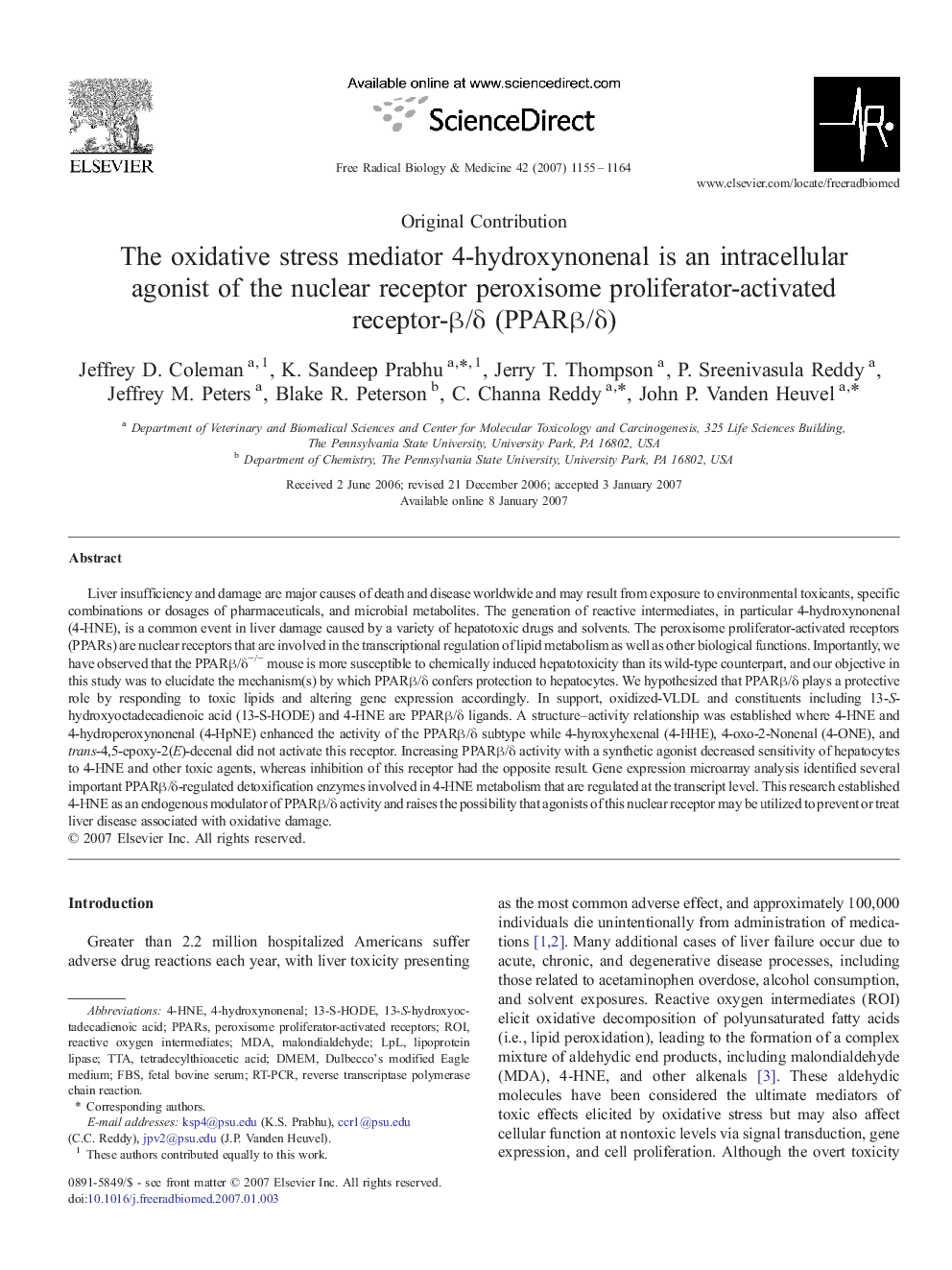| Article ID | Journal | Published Year | Pages | File Type |
|---|---|---|---|---|
| 1911437 | Free Radical Biology and Medicine | 2007 | 10 Pages |
Liver insufficiency and damage are major causes of death and disease worldwide and may result from exposure to environmental toxicants, specific combinations or dosages of pharmaceuticals, and microbial metabolites. The generation of reactive intermediates, in particular 4-hydroxynonenal (4-HNE), is a common event in liver damage caused by a variety of hepatotoxic drugs and solvents. The peroxisome proliferator-activated receptors (PPARs) are nuclear receptors that are involved in the transcriptional regulation of lipid metabolism as well as other biological functions. Importantly, we have observed that the PPARβ/δ−/− mouse is more susceptible to chemically induced hepatotoxicity than its wild-type counterpart, and our objective in this study was to elucidate the mechanism(s) by which PPARβ/δ confers protection to hepatocytes. We hypothesized that PPARβ/δ plays a protective role by responding to toxic lipids and altering gene expression accordingly. In support, oxidized-VLDL and constituents including 13-S-hydroxyoctadecadienoic acid (13-S-HODE) and 4-HNE are PPARβ/δ ligands. A structure–activity relationship was established where 4-HNE and 4-hydroperoxynonenal (4-HpNE) enhanced the activity of the PPARβ/δ subtype while 4-hyroxyhexenal (4-HHE), 4-oxo-2-Nonenal (4-ONE), and trans-4,5-epoxy-2(E)-decenal did not activate this receptor. Increasing PPARβ/δ activity with a synthetic agonist decreased sensitivity of hepatocytes to 4-HNE and other toxic agents, whereas inhibition of this receptor had the opposite result. Gene expression microarray analysis identified several important PPARβ/δ-regulated detoxification enzymes involved in 4-HNE metabolism that are regulated at the transcript level. This research established 4-HNE as an endogenous modulator of PPARβ/δ activity and raises the possibility that agonists of this nuclear receptor may be utilized to prevent or treat liver disease associated with oxidative damage.
